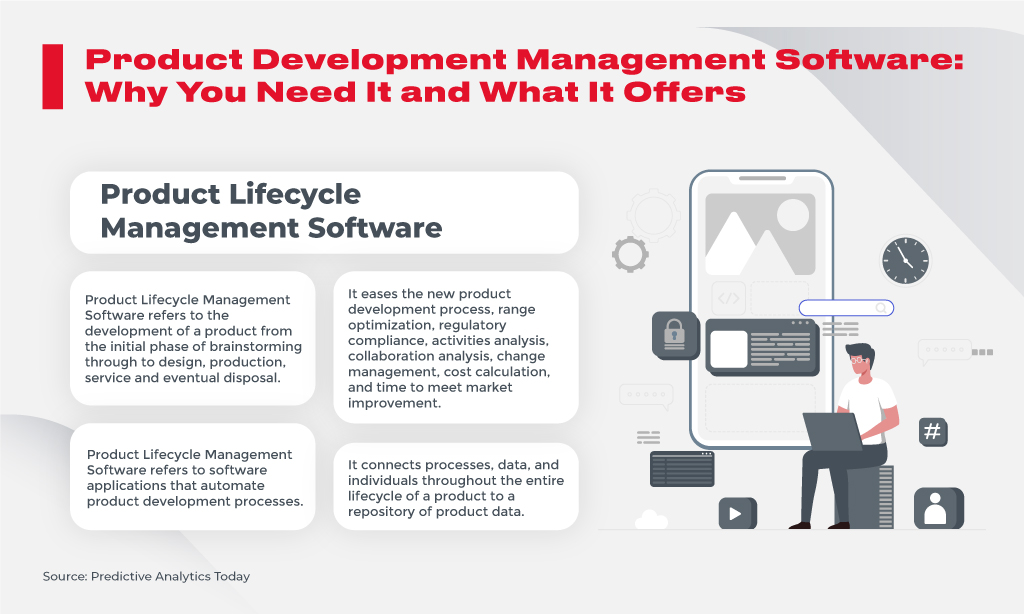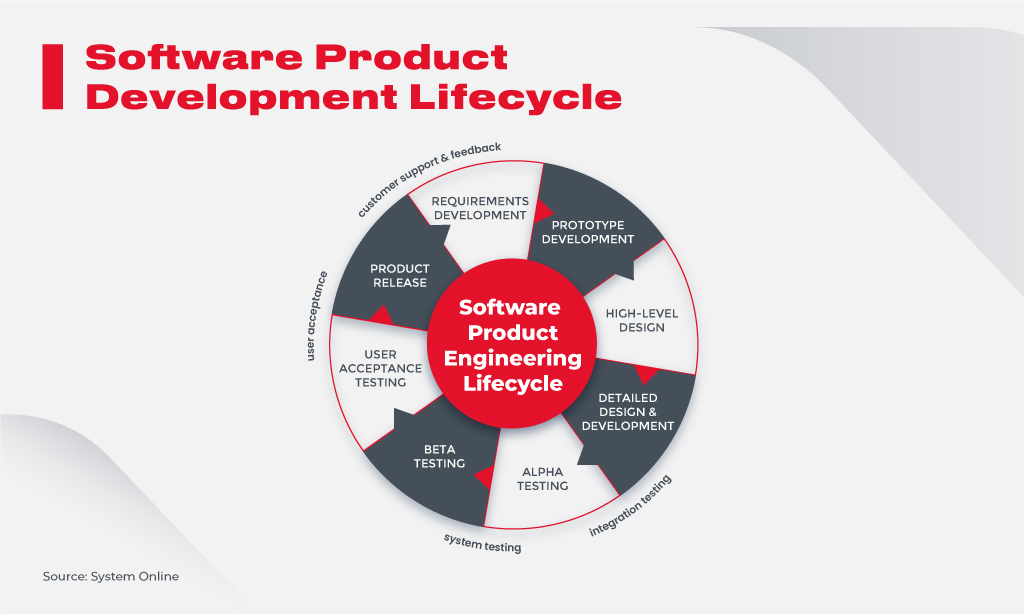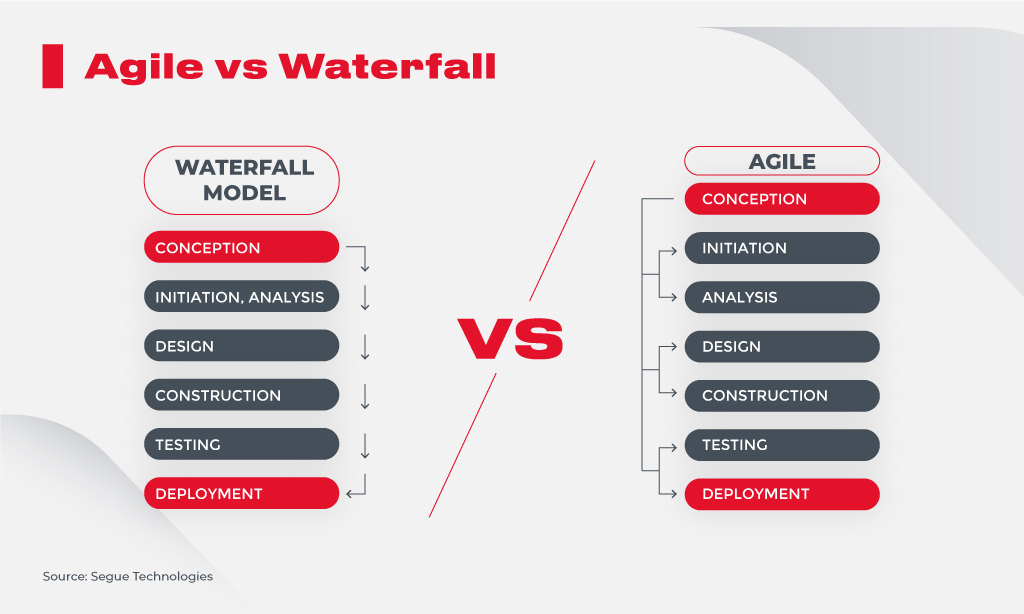Software Product Development: How the Process, Tools, and Approaches Impact the Outcome
Scott Brinker, the conference chair at the MarTech Conference, computer programmer, and entrepreneur, mentioned in his Tedx Talk about software product development a quote of the Wall Street Journal editorial that “software is eating the world.” He explained that nowadays “software holds the fields of life we’ve never used software products before,” and the number of purposes we use software for is growing.
There’s a large boost in the amount of enterprise data for storing and processing leads to the growing number of software pieces production. Thus, for example, the markets for IoT software, system integration, and data services reached $520 billion in 2021, which is more than double than $235 billion in 2017. Statista marked the e-Commerce market as the main “eater” of software and calculated that it would see 22% growth by 2023.
We decided to outline key peculiarities as well as describe the benefits of product development management software to ease your choice of a software product development company for successful collaborations in the future.
What Is Software Product Development and Why Flexibility Matters
Forbes provides a lot of topics around software product development in one of its IT blogs. Along with a variety of software development trends discussed quite often, practically every developer “is taught that a product development is a process with clear stages from identifying requirements to building a solution and testing.” However, in practice, it’s not so plain and simple. Of course, knowing software development methodologies is a must, but at the same time, one should remember following all stages one by one can be a trap. Let’s see why.
Paulo Rosado, CEO of OutSystems specifies that “starting with rigid requirements in advance is starting on the wrong foot.” Learning about these stages isn’t bad (requirement analysis, design, implementation, testing, evolution), but he proposes to start with an MVP (minimum viable product) to test users’ reactions and build up further development strategies.
The advice mentioned above is suitable for any kind of software product development:
- System software products (aimed at managing computer resources and simplifying apps programming)
- Programming software products/tools (programs assisting developers in creating, debugging, or maintaining other applications)
- Application software products (software used to perform certain tasks such as office productivity suites or data management software)
- Embedded software products (applied to manage machines via telecommunication networks or industrial robots)
Software product development contributes to your business processes optimization. If the software is customized, it offers a unique solution for building in-house operations, following marketing trends, and keeping your company competitive.
It doesn’t matter what kind of product you choose to develop; the Bit.Ai blog counted that 14% of software projects fail, namely because of an incorrect unsuccessful development process.
Software product development is aimed at the deployment of the features needed, and it’s a repetitive logical process following some stages to get a product tailored in accordance with the specific company requirements.
Product Development Management Software: Why You Need It and What It Offers
To succeed at every stage of software development and continue controlling and tracking the development flow, business owners can apply product development management software. It eases the process of turning vision into a plan, makes workflow more effective, and arranges communication between the participants.

There’s a variety of product development management tools to address different needs:
- User tracking and analysis to keep the track of your product users and their reactions
- Customer survey tools to learn your TA better
- Prototyping to align the product features to the proper start of the MVP
- Roadmapping to visualize your way in software product development
- Task management tools to arrange the workflow
- Data management and sharing for smooth interaction between production team members
- Instant messaging, which can be included in any type of product management software enumerated above
Strategies to Build a Strong Software Product Development Process
Product development management tools are helpful in process arrangements, but there are some other noteworthy tips. Jay Garcia, the Managing Partner of a consulting company “Modus Create,” shares practical opinions via Forbes on what’s important to establish a strong product development process. He emphasizes that the most powerful applications are easy to use, but they demand a lot of time and effort to develop. The key fail factor is usually a lack of alignment between the main product development process stakeholders.
The following strategies can be helpful to succeed in a software product development process:
- Slow down before speeding up: plan well to consider potential risks and vulnerabilities—and do not waste time and resources on developing the issues not suitable to your mission.
- “Get everyone on the same page”: sometimes, developers appreciate one widget, but HR representatives or the finance department favor another. It’s better to meet the demands of all the stakeholders.
- Get to know more about your users: pay enough attention to the prototype testing.
These simple steps contribute much to successful product development. Moreover, they are applicable to every stage of a software product development life cycle.
Software Product Development Life Cycle: The Process from Start to End
Proper product management software and the correct development strategy boost the flow of the software development life cycle (SDLC), which is the process of designing software quickly with the least costs possible at the highest quality required.

The SDLC provides every participant with an understanding of what’s going on and what’s coming next. You get the following benefits from the software development life cycle:
- Parties involved in the development process become visible
- Control holding for business owners throughout the whole project
- Decreasing the risks of deadlines failure or budget overspending
- Ensuring the development process will last and return to any stage until it meets the initial expectations to the full
Each SDLC stage has its own purpose aligned with the whole development scheme. And in accordance with a recent GitHub study, it’s extremely important to include the developers in the conversation on every stage of software development. It’s calculated that their “contributions to open-source projects are up more than 25% since April 2020.” Developers are contributing to the projects even during their downtime, and if business owners do not take advantage of their knowledge at every product development stage, they are risking the product’s position on the market.
Software Development Methodologies: Profiles and Advantages
You have not only a variety of product management tools to choose from while following the SDLC stages, but the process can also be arranged in a different manner (models or methodologies).
Waterfall is the oldest approach providing step-by-step operations, where each next stage is using information from the previous one. Complexities and problems are not usually fixed until all the development stages are completed. This model doesn’t work well if the project is long-term.
Agile is treated like a really efficient modern methodology as it emphasizes continuous interaction between the customers, developers, and testers. Agile generates small ongoing releases, each one with tiny incremental changes leading to a perfect product version release.

Alongside waterfall and agile models, you can come across:
- Big bang model (a bit of an anomaly among SDLC: little planning and much attention to the development, which is not great for complex projects)
- Iterative model (full knowledge of the requirements, product design, then more requirements development, and continue designing the details of the product)
- Spiral model (the most flexible SDLC model based on the repetition of iterating model stages until the desired product is performed)
- V-shaped model (verification and validation model focused on testing phase on every stage)
For any management tool you use or the SDLC model you apply, the development team matters. Anytime you find yourself looking for an experienced team of software engineers, keep in mind that Innovecs is a place where you can find the best talent.
Conclusion: Expert Software Development Team for the Best Outcomes
Global investments into digital transformation are growing. Statista estimated $7.8 trillion spent by 2024 for establishing software products helpful for going digital. So, it’s critical for business owners to map what software products are helpful, and how to arrange the development process effectively.
We recap that it’s not only important to outsource a productive software development team of experts but to be knowledgeable about product development management tools for customer research, roadmapping, data sharing, or planning. SDLC understanding is helpful as well—because if you are aware of the stages the developers follow (requirements discussion, MVP design, alpha- and beta-testing, user-acceptance tests, product release), you are able to:
- retain control over product development process;
- attract developers’ knowledge and complex problem-solving skills at every stage;
- evaluate risks of budget overspending; and
- step back and slow down at any stage to make corrections.
Everything matters: management tools for better control, methodology for meeting your specific business demands, and SDLC following for a better understanding of where you are with your product. But still, if you have any questions about software product development, we’ll be glad to answer them under detailed expert consultation provided by Innovecs professionals. Don’t hesitate to get in touch.